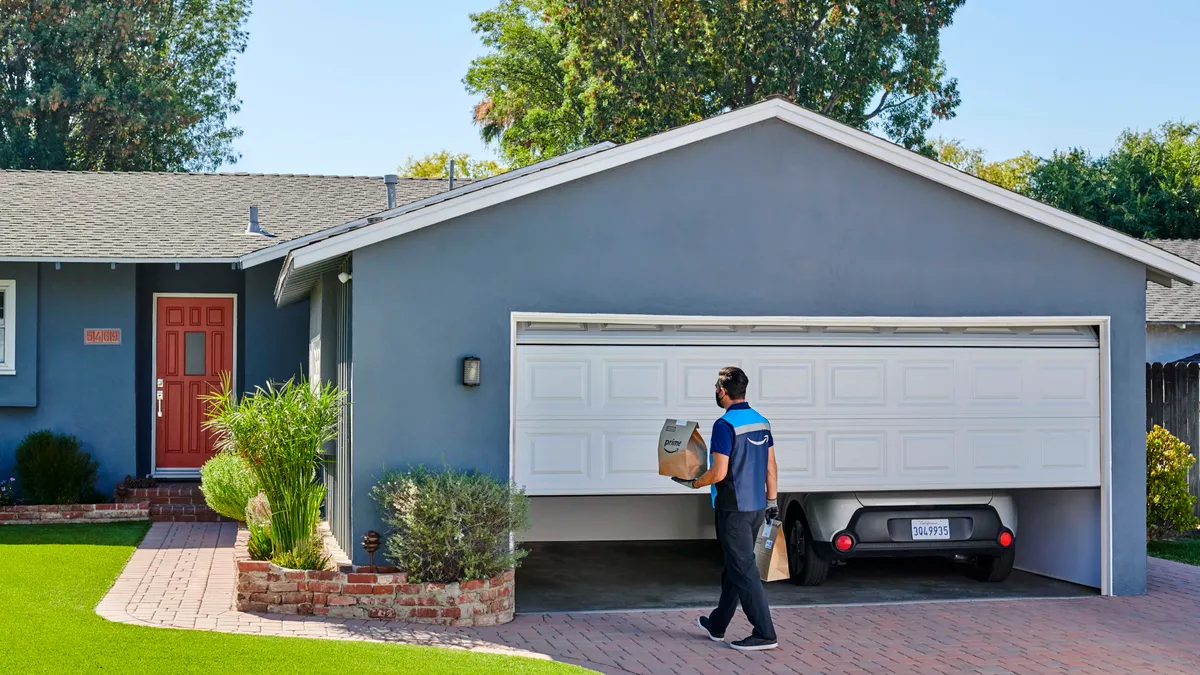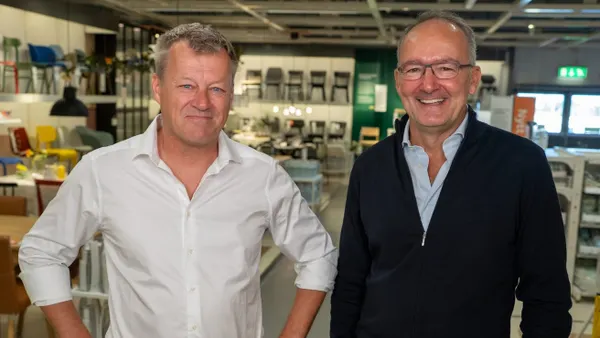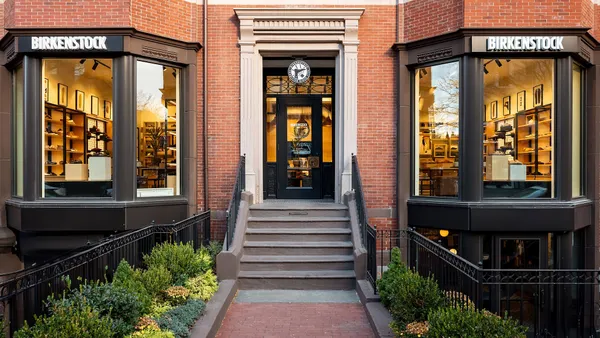Dive Brief:
- Amazon is expanding its in-garage grocery delivery service to all markets where it currently offers grocery delivery through Amazon Fresh and Whole Foods Market, according to information sent to sister publication Grocery Dive.
- The Key In-Garage Grocery Delivery service launched in five cities in November. Now it will be available to Prime members in more than 5,000 locations.
- Amazon is ramping up its in-garage delivery service as the retail behemoth grows its grocery business and competes with Walmart over delivery innovation.
Dive Insight:
Amazon is speeding its in-garage grocery delivery service from limited pilot to nationwide expansion as the company seeks new ways to make its mark in the fast-evolving industry. Offering additional service options could help Amazon hang on to delivery customers as they resume their normal routines, as well as entice tech-focused consumers to give the company's grocery offerings a try.
The Key In-Garage Grocery Delivery works by allowing eligible Prime members to link their myQ Smart Garage Hub or compatible garage door opener to Amazon's Key service, then selecting "Key Delivery" at checkout when they order groceries. Delivery drivers get one-time access for each order to put groceries from Amazon Fresh and Whole Foods into the customer's garage. Shoppers who want to watch the delivery can use a Ring smart home camera or LiftMaster Smart Garage Camera.
Amazon is marketing its in-garage grocery delivery service, which is free to Prime members, as a way to keep deliveries safe from theft, damage and weather — much as it does with its main in-garage delivery service, which launched in 2019 and last fall expanded to 4,000 cities.
But the two services differ in one key way: Shoppers won't want their perishable and frozen groceries languishing in their garages for hours on end, meaning the grocery service may only be viable for shoppers who are either home or will be arriving home soon after their delivery. Asked if Amazon provides special storage for perishable items, a company spokesperson wrote that shoppers should "immediately store their chilled or frozen items and perishables upon delivery" for safety reasons and said bags will be labeled to indicate whether chilled, frozen or dry goods are inside.
To encourage customers to use the service, Amazon is offering a $20 credit for a limited time to first-time users.
Amazon is competing closely with Walmart in delivery service innovations. In 2019, Walmart unveiled its InHome Delivery, which includes grocery delivery and returns and will soon offer prescription delivery. Costing $19.95 per month, InHome Delivery is currently available in Kansas City, Missouri, and Kansas City, Kansas; Pittsburgh, Pennsylvania; Vero Beach and Palm Beach County, Florida; and Northwest Arkansas, according to Walmart's website.
While Amazon's service only allows access to the garage, Walmart's can have deliveries placed in garages or inside homes. Customers can choose to set up their own entry keypad to their home or garage or pay $50 for Walmart to install its smart garage opener or smart door lock, which can give access to the home or garage. Shoppers can watch their deliveries live on their phones through employees' wearable delivery cameras.
In January, Walmart announced it would start testing unattended boxes from HomeValet to store grocery deliveries outside of customers' residences in Bentonville, Arkansas, this spring. The boxes, which have three separate temperature-controlled zones, can be locked and unlocked through an app.
With online grocery shopping now soaring years ahead of pre-pandemic estimates, retailers are rapidly testing and adding new convenience-focused innovations to draw customers. Along with in-garage delivery, Amazon and Walmart are exploring other delivery technologies, like drones and autonomous vehicles. More than half of consumers would try a delivery service by a drone or robot, according to recent survey data from research firm Inmar Intelligence.















